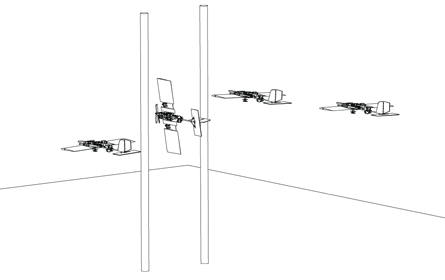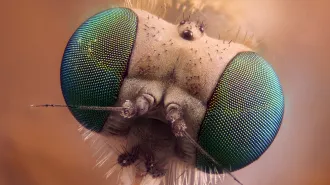Flying animals can teach drones a thing or two
Small drones will soon be zipping between trees and dodging buildings, just like swallows, bees and moths
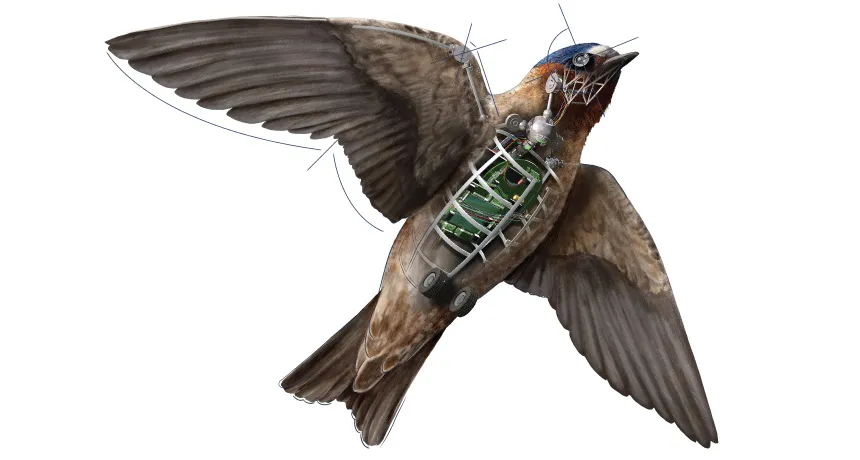
BIOMIMICRY Scientists are turning to the animal kingdom to inspire the next wave of small drones.
Nicolle Rager Fuller
Ty Hedrick stands on a riverbank watching an aerial clash between two foes.
An intruder has ventured into restricted airspace and must flee as quickly as it came. The wind shifts as the pursuer dips when the invader dips, curls when it curls. They match each other step for step, or more accurately, wingbeat for wingbeat.
The battle pits two cliff swallows (Petrochelidon pyrrhonota) against each other, midnight blue on their backs and pumpkin orange on their throats.
For Hedrick, a biologist at University of North Carolina at Chapel Hill, swallows are the top guns of the animal kingdom. As the birds careen overhead, Hedrick captures their deft maneuvers, snapping 100 images per second with three high-speed cameras. He and his team trace the positions of cliff swallows as they battle for territory. Through research like this, the scientists have learned that the birds perform extreme high-speed turns that would incapacitate the best human fighter pilots. The researchers published their latest findings on the birds’ moves last August in the Journal of Experimental Biology.
Hedrick has become a swallow voyeur as part of a nationwide coalition of engineers building a futuristic fleet of aerial drones. The drones will range from hummingbird-sized to those as broad as some eagles. Each is inspired by flying animals, both in body architecture and brain wiring.
“We’re not trying to replicate nature, but harness basic principles,” says aerospace engineer Kristi Morgansen of the University of Washington in Seattle, who leads one of two animal-inspired projects funded by the U.S. Office of Naval Research. Both teams are tackling things that existing drones can’t do, such as think for themselves or pull tight maneuvers in crowded places.
Morgansen’s team, dubbed AIRFOILS (for Animal-Inspired Robust Flight with Outer and Inner Loop Strategies), is constructing autonomous drones that “feel” their environment. The other bioinspired team is run by Russ Tedrake, director of the Center for Robotics at MIT’s Computer Science and Artificial Intelligence Lab. Its name is even more of a mouthful: Provably Stable Vision-Based Control of High-Speed Flight through Forests and Urban Environments. That project’s goal is to build drones that can speed through a forest or a city while dancing through trees or between buildings. The two projects split $15 million in funding.
“We hope these programs will create a new generation of relatively lightweight, cheap systems that can fly through very complex environments,” says Marc Steinberg of the Office of Naval Research.
Story continues after slideshow
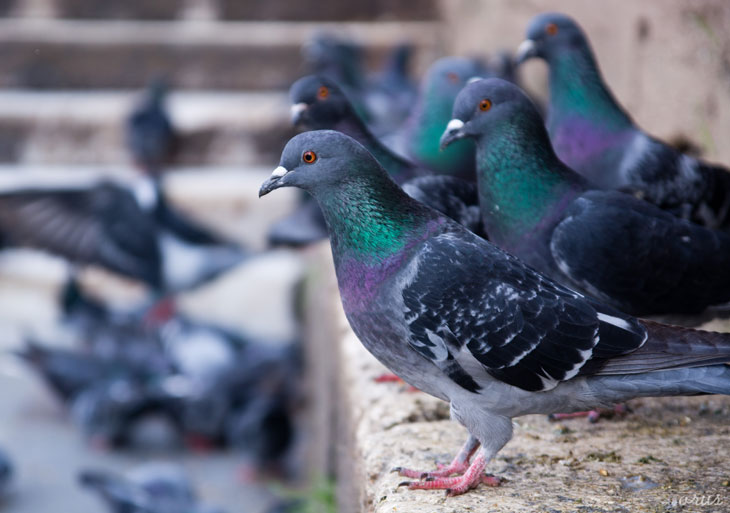
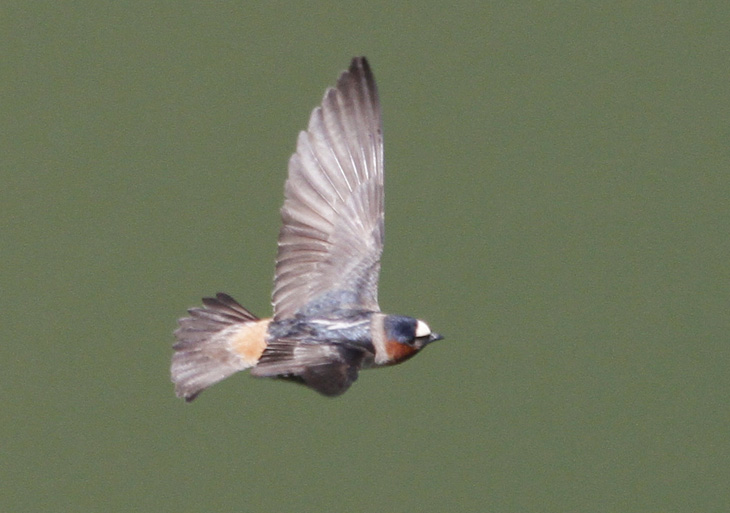
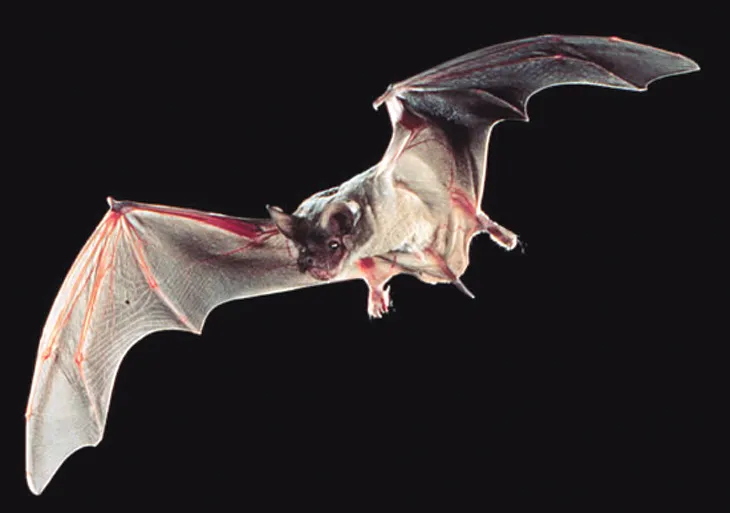
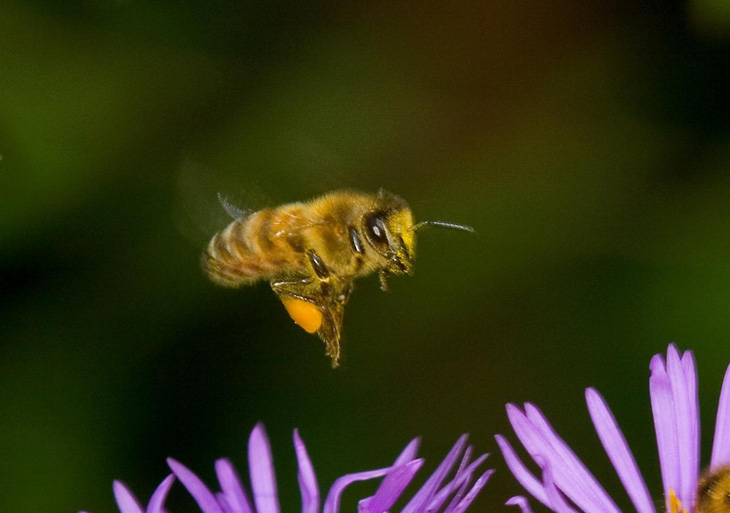
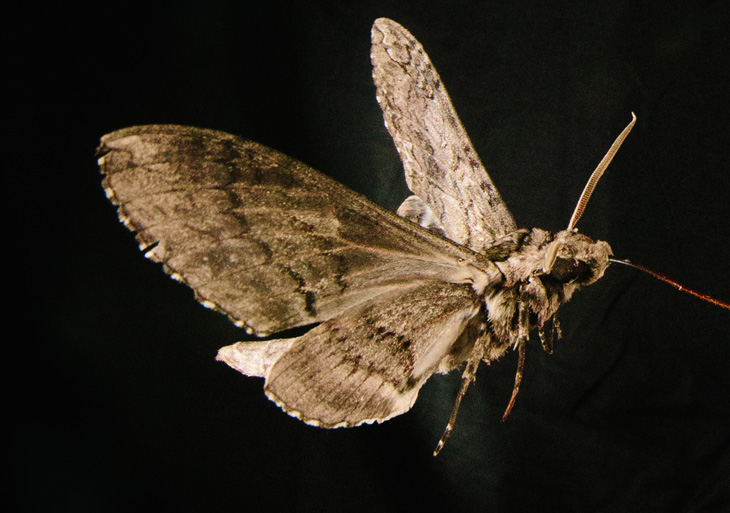
If all goes well, the new and improved unmanned aerial vehicles, or UAVs, will sport flexible wings, like birds’ or bats’, that bend when they brush against an object like a tree branch. To help maneuver in turbulent weather, their wings will sense the wind as it rushes by. Since the project began in 2010, the teams have moved closer to these goals, crafting drones that drop onto perches and instinctively avoid objects in their way.
The researchers envision drones that will fight forest fires, spot poachers on the savanna and catch environmental polluters. Some drones carrying packages will zip through offices, dodging people and each other, all self-directed. The Federal Aviation Administration predicts that 30,000 drones of all sizes will fill domestic skies by 2030.
But they’ll need to know how to behave. To craft the next armada of microdrones, scientists are glancing skyward to see what can be learned from nature’s high fliers.
Tracking a flying ninja
Until Hedrick’s study, detailed investigations into avian aerodynamics and biomechanics were confined to wind tunnels, which are basically hamster wheels for birds.
“In the past, you could record from muscles while they were contracting and obtain measurements of a bird’s physical limits,” says biologist Andrew Biewener of Harvard University. “But you couldn’t track flight performance over a broad range of behaviors or in a large-scale natural environment.”
Such was the situation when Hedrick joined Biewener’s lab as a graduate student in 1999. But Hedrick and Biewener soon added new toys to the classic wind tunnel experiment: high-speed video cameras. By positioning five cameras around a wind tunnel, the two could monitor a bird’s shoulder joint as it rotated during each flap, producing lift. They could track every feather as it bent.
Before this innovation, flapping and maneuvering were just too fast to track accurately. Multiple shooting angles brought more freedom. The researchers built an L-shaped tunnel to watch cockatiels, their favorite bird at the time, turn a corner.
Hedrick brought some unique skills to the table after working two years in e-commerce in San Francisco. When he returned to research (he had earned a bachelor’s degree in biology at Brown University in Providence, R.I.), he built software that could take a video recording and mine every facet of a wing’s motion. Each video frame contained thousands of visual points — pixels — on every feather. With multiple cameras, a single run might collect millions of data points that trace the contours of a moving wing.
Story continues after video
|
HIGH FLIERS Scientists have turned to Mother Nature’s most adept aerial acrobats — birds, bees, bats and other animals — to inspire their designs for self-directed drones. With the right tweaks, these drones have the potential to fight forest fires, spot poachers and catch polluters. Images and video: Don DeBold; Hans Hillewaert; Oren Peles; Josch13; Tedrake Lab/MIT; Hedrick Lab/UNC. |
Hedrick, Biewener and colleagues created computer programs to extract treasure from this data dump. They used the software to gauge how much power a turtledove wingbeat produces and how cockatiels contort their wings and accelerate. Results of the studies appeared in 2003 in Nature and 2004 in the Journal of Experimental Biology.
“Today, we’re at the beginning of a whole new understanding of how animals fly, and Ty has absolutely been a pioneer,” says comparative physiologist Douglas Altshuler, who uses Hedrick’s open-source algorithms to study hummingbird flight at Vancouver’s University of British Columbia.
In 2012, Hedrick and colleagues at Boston University adapted this technology to move their studies of avian biomechanics outside. Swallows make for great outdoor subjects because of their endurance and acrobatics. The birds cruise out in the open and fly practically nonstop for 13 hours a day. “It’s just insane,” says Bret Tobalske, director of the University of Montana Flight Laboratory in Missoula. He works with Hedrick on a separate project involving barn swallows (Hirundo rustica)
in Oregon.
Swallows are aerial ninjas — both in the way they chase food and compete for territory. They have evolved deft maneuvers to catch elusive prey, such as dragonflies, grasshoppers, moths and flies. Barn swallows, for instance, hunt by zipping back and forth across a field. The birds “hug the deck,” flying just above the ground, as insects coast overhead. When a swallow sees a juicy bug, it swings up and snaps its beak around its meal. Then like a pendulum carnival ride, the bird swoops back down, heading in the opposite direction. The whole flight takes a few seconds.
When cliff swallows compete for territory, their sprints and turns can be surprisingly mild, given what the birds are capable of, Hedrick observed in the 2014 Journal of Experimental Biology paper. The birds flew at an average of 25.2 kilometers per hour, even though their
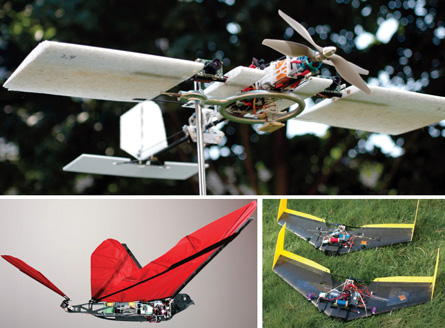
Hedrick thinks the breakneck speeds and banks cause extra fatigue for muscle and bones. After the freakish 7.8-g maneuver, the birds’ speed dropped immediately from 52.6 to 16.2 km/h.
The study revealed that flapping gives birds the flexibility to make hard turns while flying swiftly or slowly. Now the AIRFOILS team is deconstructing and rebuilding the minutia of the swallows’ flight for drone maneuvering.
Staying airborne
By investigating the common features of different species — bats, swallows, hawk moths and bees — the AIRFOILS team hopes to isolate the keys for agile flight. For instance, Carolina hawk moths (Manduca sexta) are nimble fliers similar to hummingbirds in wingspan and zippy style. Hawk moths dart around, then suddenly pause to hover. They levitate so steadily that they can recover within three wingbeats after being hit with a clay cannonball, Hedrick’s team reported at the 2011 Society for Integrative and Comparative Biology conference. The insects manage this without the muscles and bone structure that their avian counterparts use to maneuver. But how?
Hedrick and Daniel reported in 2006 in the Journal of Experimental Biology that hawk moths sweep and bend their wings in as many as 20 different orientations to dampen turbulence while hovering. Plus, they take advantage of a surprising move. The researchers like to call it twerking.
Morgansen and another AIRFOILS member, University of Washington biologist Tom Daniel, saw this special dance when they put hawk moths into a semicircle arena covered with LED panels. In the same way they would react to a flame, the moths turned toward the lit-up LED lights. By using high-speed video and Hedrick’s algorithms, the team learned that hawk moths wiggle their abdomens to quickly pivot up or down, as reported in the Journal of Experimental Biology in 2013.
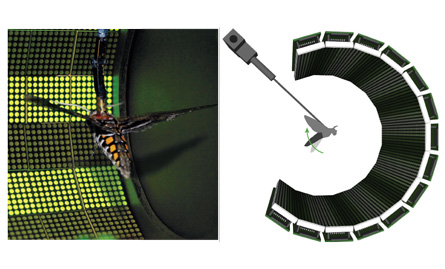
By attaching abdomen-like appendages to a helicopter-style drone with four propellers, known as a quadrotor UAV, Morgansen and Daniel tried this piloting concept. The artificial abdomen would pivot as the drone pitched up and down. The appendage stabilized the drone’s flight, which they reported in 2012 at the 15th International Conference on Climbing and Walking Robots and the Support Technologies for Mobile Machines.
Future autonomous drones will also need to learn how to feel the air. A strong wind will hardly throw a bird or an insect off course, because it can feel the squall and adjust its wings. Can drones do the same?
“Most people believe every feather is used as an aerodynamic sensor,” says MIT’s Tedrake. When the wind pushes against these sensors, they send nerve signals to the brain and trigger reflexive movements. Each gust is like a finger prick that causes birds to instinctively contort their wing shape, which is known as actuation, to relieve the strain.
Hawk moths use wing sensors to assist in flight control too, Daniel’s team reported last July in the Journal of Experimental Biology. Hawk moths use their wing sensors much like flies use halteres, special organs behind the wing that serve as a biological gyroscope, sensing the insect’s body rotation during flight.
By scanning the animals’ motions, Morgansen says, researchers are learning where to place artificial sensors on drones.
Dodge and weave
If the future involves drones crowding the sky, the machines will need sharp visual systems to work along with their wind sensors. Akin to Luke Skywalker’s speeder bike instinctively dodging trees on the forest moon of Endor, these drones must sense objects as they approach and dance around them.
Tedrake’s team is on it, having designed a visual system that can recognize oncoming impediments and turn the drone.
One example from Tedrake’s lab, called push broom stereo, behaves like working memory in birds and humans. As reported last July at arXiv.org, the computer program uses two small cameras on a drone to scan the space about five meters in front of the drone. When an obstacle appears, push broom temporarily remembers the object’s position so the drone can evade it. Initial flights were manually piloted, but the authors say they are confident that the system could autonomously avoid the obstacles, as well. Once past, its memory banks forget the obstacle. This amnesia means that engineers can use smaller computers for piloting, which translates into smaller drones.
A push broom drone can fly at 32 km/h, snapping images at 120 frames per second to take in its surroundings. It is the fastest vision system on a small UAV, according to Tedrake’s group.
Future drones must also be flexible enough, physically and cognitively, to react. Last year at the IEEE International Conference on Robotics and Automation, Tedrake’s lab presented another artificial pilot that lets a drone twist like a bird, quickly turning sideways and zooming between two narrow posts, before swinging back into a horizontal position.
His team has also figured out how to instruct a small glider to hit the brakes and land on a perch. This maneuver — known as a stall — typically causes a fixed-wing aircraft to crash.
“Most of our best control systems on fighter jets, they don’t let you stall your wings. But birds do it routinely,” Tedrake says. “Do the jets need more dexterous wings or more flexible brains? Our early results suggest the latter.”
In the June Bioinspiration & Biomimetics, Tedrake and colleagues reported a computer algorithm that can read airflow over the glider’s wings and autonomously control its tail, piloting the craft onto a perch. In the future, the researchers plan to program this maneuver into a drone’s onboard computer so it can perch on power lines and recharge.
Future aerial traffic jams might also be avoided by taking a lesson from how flying animals behave in swarms.
For instance, cliff swallows host annual roosting flights, swarming over fields. “Several hundred birds will engage in massive synchronized flights, where the whole group flies as one,” says behavioral ecologist Charles Brown of the University of Tulsa, Okla. He has monitored more than 229,000 cliff swallows in western Nebraska over the last three decades.
“It’d be cool if instead of pairs, one of Hedrick’s future studies tracked 300 birds,” Brown says.
That prospect might soon be within reach. Computer scientists Diane Theriault and Mikhail Breslav, doctoral students at Boston University, have partnered with Hedrick to expand the scope of multicamera videos to examine swarms of flying animals, such as bats and swallows. Theriault has constructed algorithms to track dozens of individual free-tailed bats as they emerge at dusk from caves in Texas. And Breslav is adding infrared technology to monitor those nighttime flights.
Hedrick’s lab has recently used these tracking algorithms to create a three-dimensional simulation of a flock of chimney swifts (Chaetura pelagica).
During their autumn migration, swifts form a large tornado-shaped flock of over 2,000 birds just before they dive into a chimney to roost overnight. “That landing guidance behavior is similar to how you might collect a flock of small drones after they were deployed,” he says.
“A lot of the cool stuff will use these mathematical approaches to figure out how animals control their movements,” Morgansen says. “We don’t have all the answers yet, but I’m sure that they’ll be good.”
This article originally appeared in the February 7, 2015, issue of Science News under the headline “High Fliers.”
